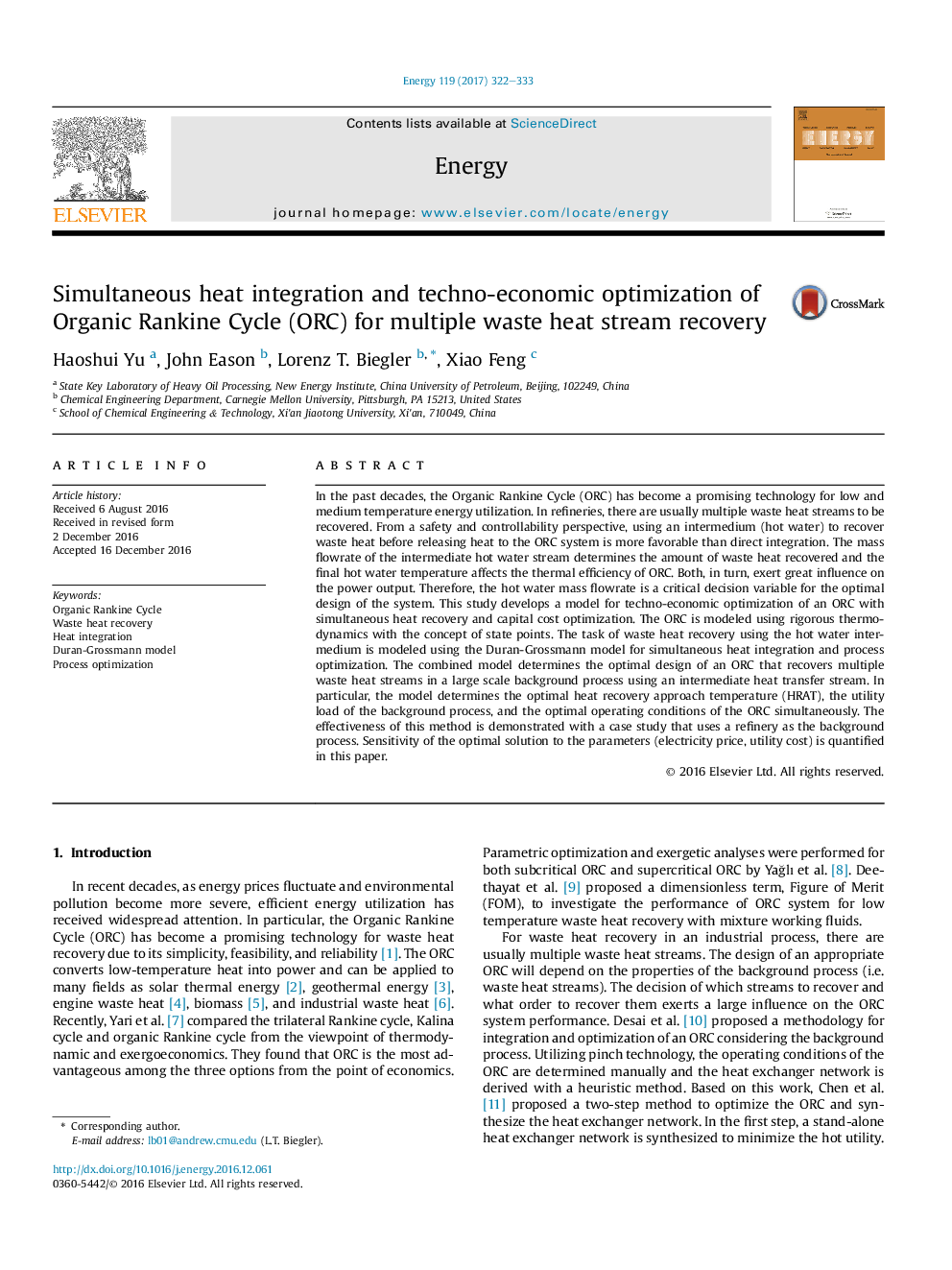| Article ID | Journal | Published Year | Pages | File Type |
|---|---|---|---|---|
| 5476886 | Energy | 2017 | 12 Pages |
Abstract
In the past decades, the Organic Rankine Cycle (ORC) has become a promising technology for low and medium temperature energy utilization. In refineries, there are usually multiple waste heat streams to be recovered. From a safety and controllability perspective, using an intermedium (hot water) to recover waste heat before releasing heat to the ORC system is more favorable than direct integration. The mass flowrate of the intermediate hot water stream determines the amount of waste heat recovered and the final hot water temperature affects the thermal efficiency of ORC. Both, in turn, exert great influence on the power output. Therefore, the hot water mass flowrate is a critical decision variable for the optimal design of the system. This study develops a model for techno-economic optimization of an ORC with simultaneous heat recovery and capital cost optimization. The ORC is modeled using rigorous thermodynamics with the concept of state points. The task of waste heat recovery using the hot water intermedium is modeled using the Duran-Grossmann model for simultaneous heat integration and process optimization. The combined model determines the optimal design of an ORC that recovers multiple waste heat streams in a large scale background process using an intermediate heat transfer stream. In particular, the model determines the optimal heat recovery approach temperature (HRAT), the utility load of the background process, and the optimal operating conditions of the ORC simultaneously. The effectiveness of this method is demonstrated with a case study that uses a refinery as the background process. Sensitivity of the optimal solution to the parameters (electricity price, utility cost) is quantified in this paper.
Related Topics
Physical Sciences and Engineering
Energy
Energy (General)
Authors
Haoshui Yu, John Eason, Lorenz T. Biegler, Xiao Feng,
